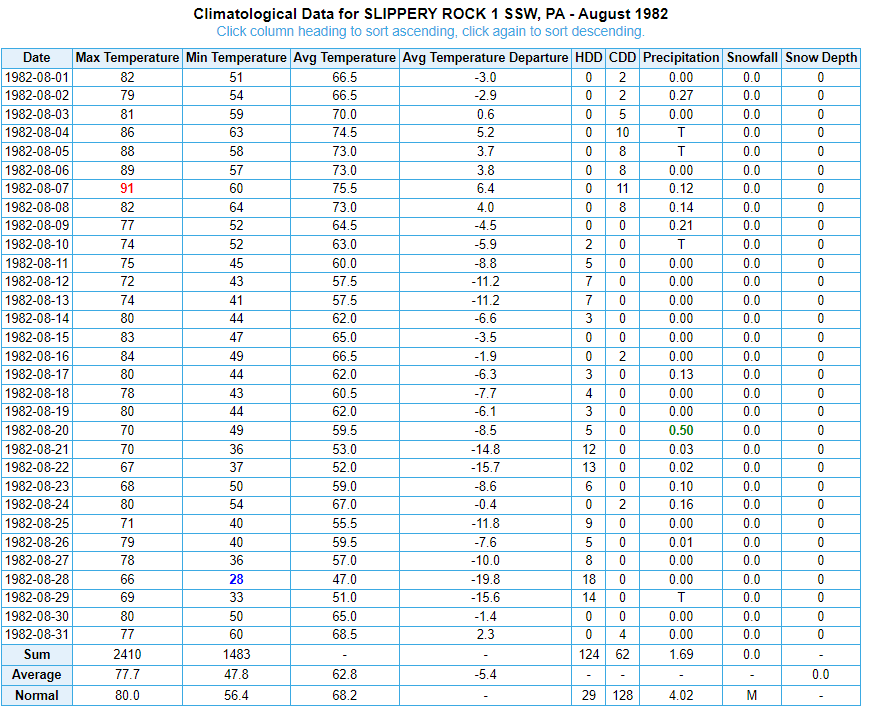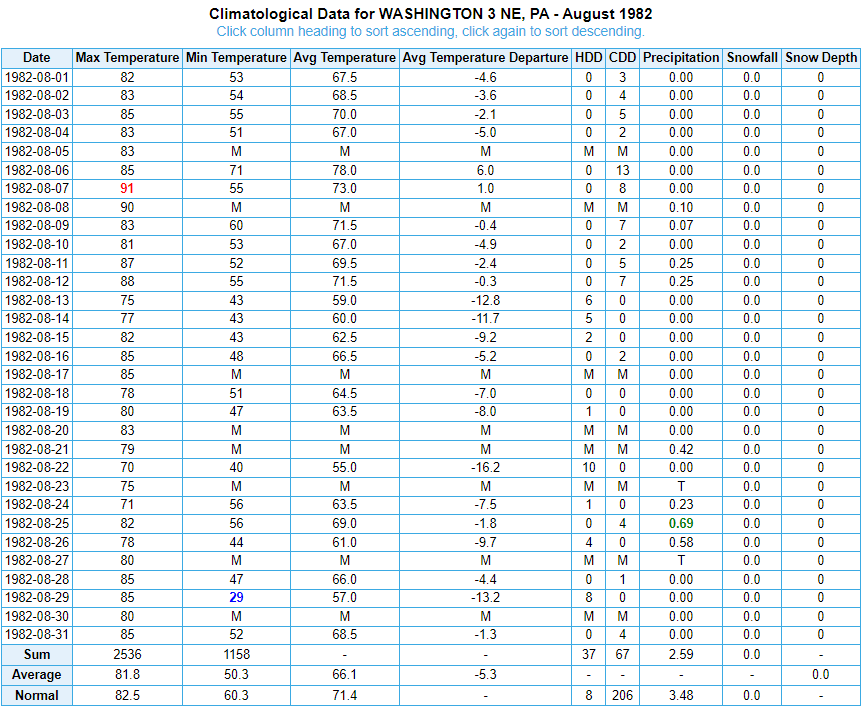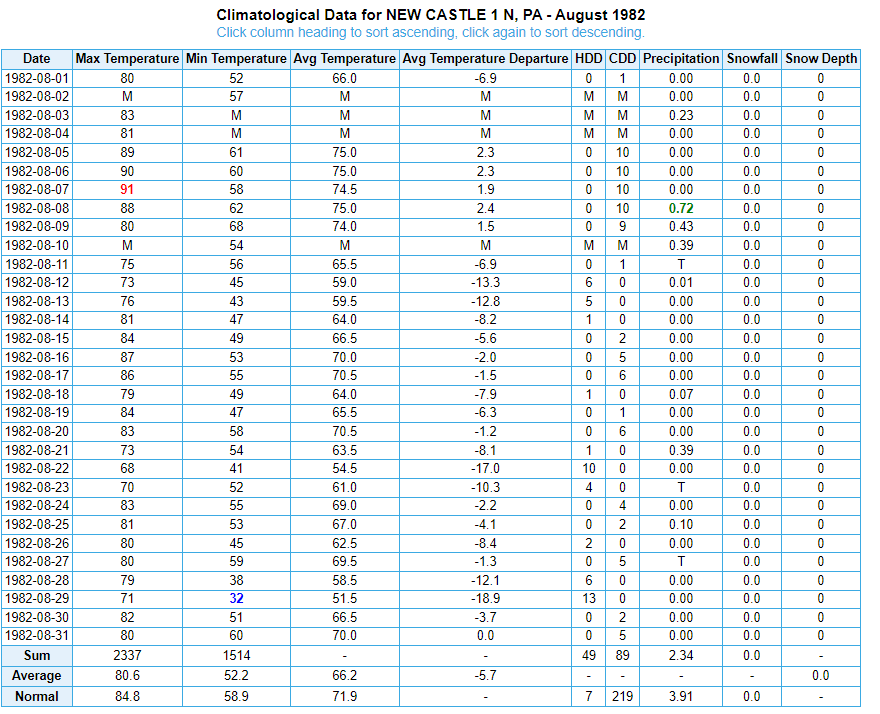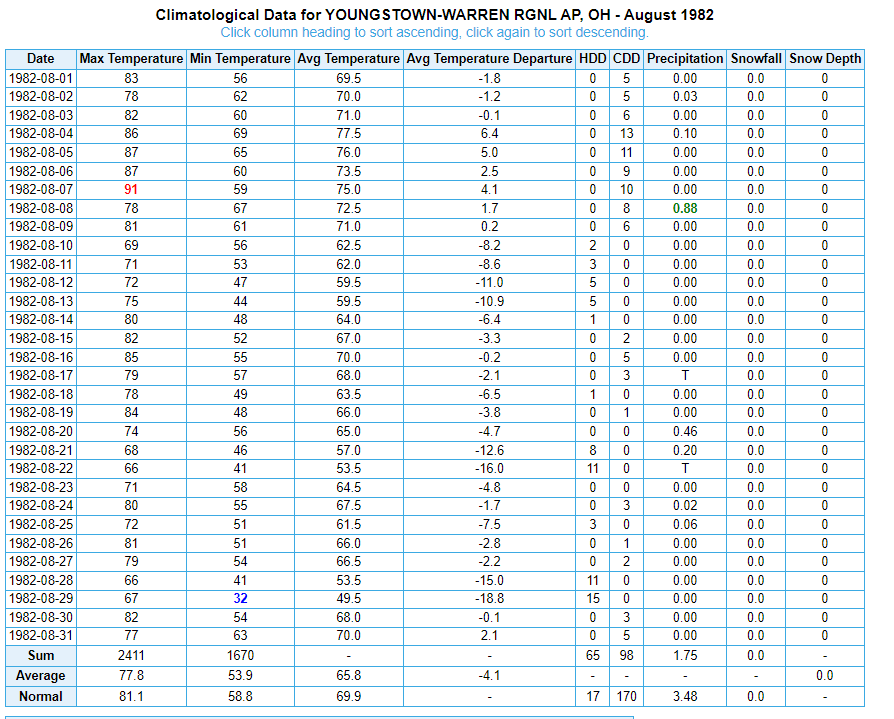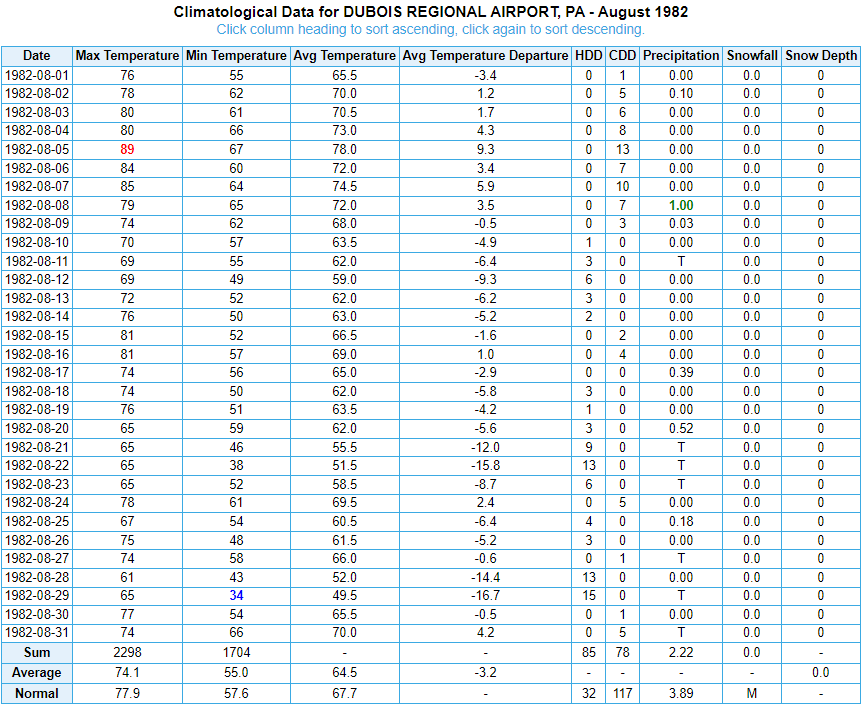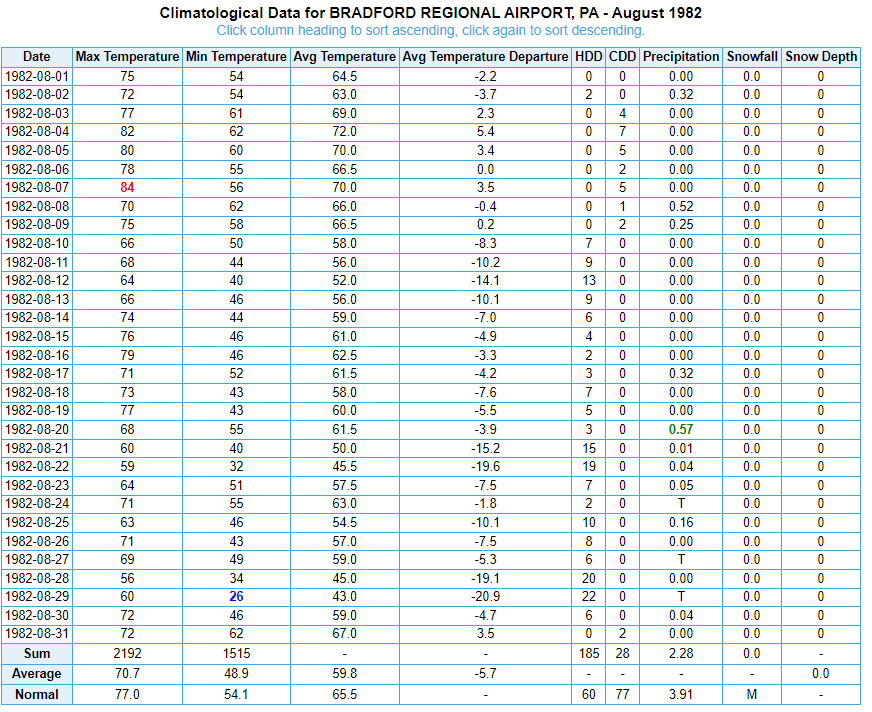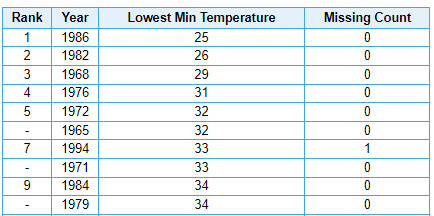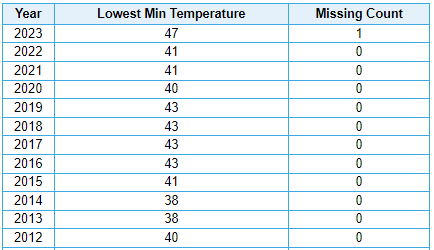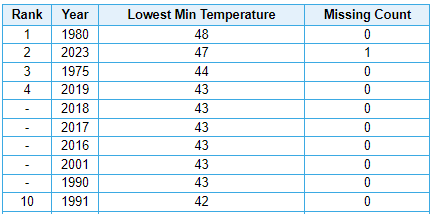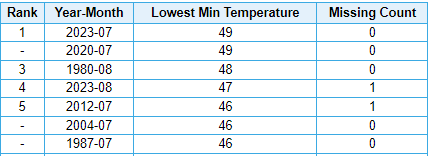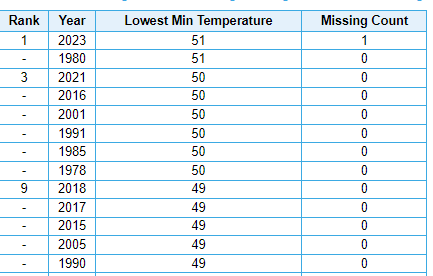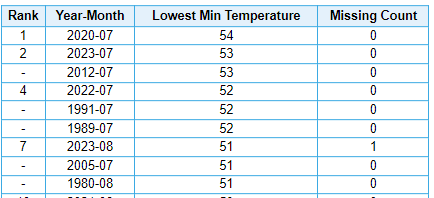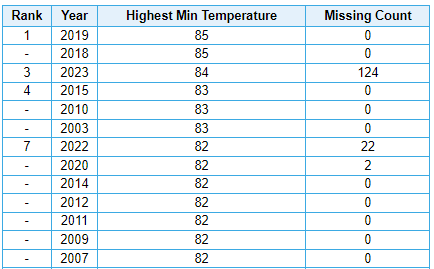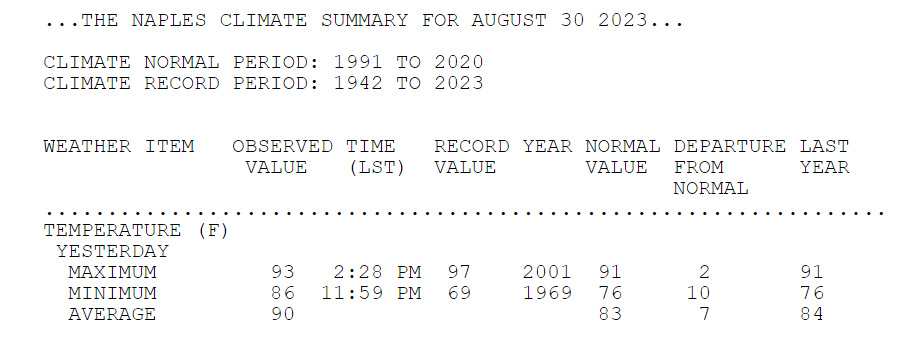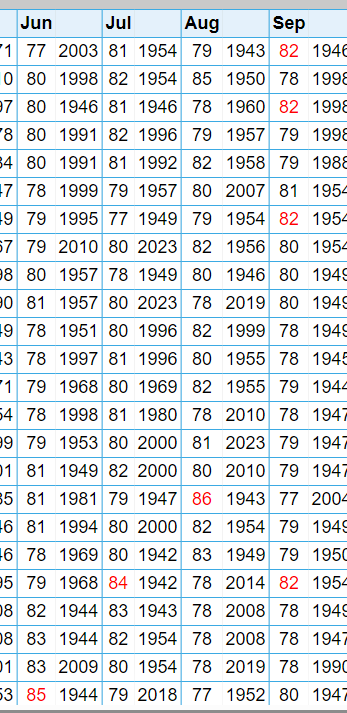
TheClimateChanger
Members-
Posts
4,080 -
Joined
-
Last visited
Content Type
Profiles
Blogs
Forums
American Weather
Media Demo
Store
Gallery
Everything posted by TheClimateChanger
-
Occasional Thoughts on Climate Change
TheClimateChanger replied to donsutherland1's topic in Climate Change
Additionally, Dulles Airport reached 99F today, matching the all-time September monthly record set on September 2, 1980, September 10, 1983 & September 11, 1983. There is a good shot at the temperature climbing into the triple digits for the first time on record in the month of September in the coming days. -
Dulles Airport reached 99F, matching its monthly record high set on September 2, 1980, and September 10 & 11, 1983.
-
Occasional Thoughts on Climate Change
TheClimateChanger replied to donsutherland1's topic in Climate Change
Some observations I have shared on the Lakes/OV subforum regarding the ongoing heat wave. I figured I'd share here for a larger audience with the climate buffs. More to come in the coming days, no doubt. I found the data from Denver quite shocking, with no readings above 97 degrees prior to 2019 in the month of September, and now 9 of them since then. Also, very impressive heat in northern Minnesota today, with Duluth easily eclipsing the September monthly record. There has not been a hotter day than today at Brainerd since July 1936, and this is now the third year in a row with a 100F or better reading there, which is unprecedented in the historical record. September 1 September 2 September 3 -
September 2023 General Discussion
TheClimateChanger replied to hardypalmguy's topic in Lakes/Ohio Valley
Brainerd reached 102F today, one shy of the September monthly record set on September 10, 1931. It was the hottest day since July 15, 2006, and would have matched the August monthly record which was set on August 4, 1947. Only four days in recorded history were hotter than today at Brainerd - the aforementioned 103F reading from September 10, 1931; July 10, 1936 (106F); July 11, 1936 (103F) and July 12, 1936 (103F). Which is to say it has not been hotter than today at Brainerd since July 12, 1936, during the most impressive heat wave of the Dust Bowl. At more than 87 years ago, I would venture to guess few living Brainerdians have experienced a day hotter than today, and fewer still would have been old enough to recall it. It has now reached 100F or better three years in a row - it was 100F on June 4, 2021 (earliest on record) and 100F on June 20, 2022. Both of those dates tied the June monthly record of 100F set on June 19, 1988. It does not appear there had ever been two years in a row with a 100+ reading prior to the current stretch of 3 years. This in a place better known for snow and the Coen brothers cult classic, Fargo, which, of course, featured plenty of snow and a gory wood chipper. -
September 2023 General Discussion
TheClimateChanger replied to hardypalmguy's topic in Lakes/Ohio Valley
Okay, so Duluth might be the most impressive record yet. Hit 97 today, breaking the previous September all-time monthly record by 2 degrees set on September 7, 1976. It shattered the daily record by 8 degrees. Prior to today, the latest 97 or higher reading at Duluth was on August 1, 1930, when it also reached 97 degrees. Which is to say, yes, this would have tied the August monthly record as well. The low of 71, should it hold, would be just one shy of the highest on record for the month. And the mean of 84F easily bearing the prior record of 82F. Both of those records are from September 11, 1931, I believe. I do say “should it hold” since I am aware Duluth is prone to lake breezes which can result in rapid temperature swings. I don’t believe that’s the case today, but I didn’t investigate. -
September 2023 General Discussion
TheClimateChanger replied to hardypalmguy's topic in Lakes/Ohio Valley
A couple other observations. The high of 101 in Sioux Falls, South Dakota was the first 100+ reading in the month of September at that location since 1976, and only the seventh year to achieve that figure. The high is again forecast to be around 101F today, and if it achieves that, this would be the first year with more than one 100+ readings in over 100 years (1922 was the last year with that distinction). The high of 102F at Sioux City, IA was the first 100+ reading in the month of September at that location since 2000, and was also just one shy of the monthly all-time record of 103F. This was also only the eighth year that has reached 100 in September. Should it reach 100 today, it would be the first year with more than one 100 degree reading in September since 1939, and third overall (1895, being the other). -
September 2023 General Discussion
TheClimateChanger replied to hardypalmguy's topic in Lakes/Ohio Valley
Impressive heat in parts of South Dakota today. Winner reached 107F, one shy of the all-time record for the month of September set on September 9, 1931, and the second warmest reading on record for the month. The low of 76F was also the second warmest of record, behind 78F on September 7, 1945. The daily mean of 91.5F was easily the hottest of record in the month of September. The old record was 89.0F, set on September 2, 1983 & September 8, 1931. In fact, the 91.5F daily mean is the easily the latest in the calendar year that value was attained. A daily mean of 91.5F was reached on August 16, 1988, which is the latest date other than today on which a daily mean equal to or greater than today’s value was attained at Winner, SD. -
Central PA Summer 2023
TheClimateChanger replied to canderson's topic in Upstate New York/Pennsylvania
Looking at NowData, there are only two instances of a high greater than 90 after August 9 - August 28, 1973 & September 3, 2011. Bradford registered it’s earliest 90+ reading on record just last year, when it reached 90 on June 16, 2022. The prior record was July 2, 1966. -
Central PA Summer 2023
TheClimateChanger replied to canderson's topic in Upstate New York/Pennsylvania
May see some monthly all-time record highs in some of the higher elevations with the upcoming heat wave. Bradford could possibly see it’s latest 90 degree day on record, and DuBois could approach the monthly record high of 91. -
Will be interesting to see whether IAD can eclipse the monthly record of 99F, and set a new latest date for a maximum of 100F or better. The current record is August 27, 1987, when it reached exactly 100F.
-
September 2023 General Discussion
TheClimateChanger replied to hardypalmguy's topic in Lakes/Ohio Valley
Although outside this subforum, worth noting Denver reached 99 today. I checked on NowData, and that was a daily record and equals the third warmest reading on record in the month of September. The only warmer readings were 100 on September 2, 2019, and 101 on September 5, 2020. It also reached 99 on September 7 & 8, 2022, and September 10, 2021. Prior to 2019, it had never reached 98 in Denver in the month of September. With today’s high of 99, it has now reached 98 or better on nine occasions in the past 5 years. In the context of the past five years, a pretty typical early September heat wave in Denver. But it would have been a new monthly record high prior to 2019. Records for Denver date to 1872. -
How closely do the PRISM numbers agree with the officially tallies from NOAA? A mean of 72.98F would be 15th warmest overall, between 2007 & 1933. I would have thought this would be a Top 10 hottest summer with the record-breaking heat in the south and parts of the west. Note that the PRISM anomaly is based off 1991-2020 climatology, whereas the NOAA anomalies are based off the cooler 20th century mean [1901-2000]. Also worth noting that while this may be the 15th warmest summer overall, it is warmer nationally than all but three summers prior to 2000 (those three being the notorious drought years of 1934, 1936 & 1988).
-
September 2023 General Discussion
TheClimateChanger replied to hardypalmguy's topic in Lakes/Ohio Valley
The NWS point-click forecast centered on KMSP, shows a high of 96 on Saturday, 100 on Sunday, and 99 on Labor Day (see below). Saturday's forecast value is one shy of the daily record, and the other two would be new daily records. More significantly, this would be the second latest 100+ reading on record for the Minneapolis-St. Paul area. The latest 100+ reading is September 10, 1931, when the mercury is said to have climbed to an incredible 104F. That is the only 100+ reading on record in the month of September in the Minneapolis-St. Paul area dating back to 1872. The current second latest 100+ reading is August 17, 1947, when it reached exactly 100F, so that September 10, 1931 is really an aberration. Obviously, can't break the September 10, 1931 record, but there is a decent chance of the second latest 100+ reading on record, and potentially the first time two days of 100+ were recorded in the month of September if Labor Day is just slightly warmer than presently forecast. For the record, there is only one occasion when the month of August has had more than one 100+ reading in the Minneapolis-St. Paul threaded record - 1947, when it reached that figure 4 times. And there are only two dates in the entire threaded history where it's reached 100 or better after August 15 - 8/17/1947 & 9/10/1931. -
Pittsburgh/Western PA Summer 2023
TheClimateChanger replied to Ahoff's topic in Upstate New York/Pennsylvania
Old Farmer's Almanac says an old-fashioned winter wonderland is on tap for this winter. I'm not so sure I believe this, especially with a potential Super El Nino. They even claim it will snow for the Steelers home game on December 23rd. I think when you start making specific predictions like that, you're no longer practicing any semblance of meteorology, or science, but something more akin to astrology or pseudoscience. -
Central PA Summer 2023
TheClimateChanger replied to canderson's topic in Upstate New York/Pennsylvania
Sorry, it's difficult to be optimistic. Even in a relatively cooler summer, it's still exceedingly difficult to come anywhere near cold records. I think the low at PIT in the current cool snap was 58 this morning, which is only a couple degrees below normal. As an aside, excluding today, PIT has averaged 55.3F over the first eight months of the year. The last 8 years have averaged 54.7 for Jan-Aug, and the last 14 years have averaged 54.3 for Jan-Aug. By comparison, the mean at Clarksburg, West Virginia for Jan-Aug from 1948 to 1980 was 53.9F. We are now warmer than the typical climate in Clarksburg, West Virginia for the mid to latter part of the 20th century. This year has also been warmer than about 1 in every 4 years over that same stretch at Charleston, West Virgina, and the mean at PIT for the past 8 years is warmer than roughly 1 in 6 years at Charleston, West Virginia for the period 1948-1980. In other words, the last 10-15 years at PIT are now warmer than a typical mid/late 20th century climate in northern West Virginia, and approaching the 20-25th percentile of similar elevations in southern West Virginia. Hard to be an optimist. And like I said, I'm not even looking at 1800s or early 1900s, I'm just looking at temperature records only a little more than 40-70 years ago. Probably in the lifetime of some posters here. And it might be easy to blame the heat island, but I would point out Clarksburg has averaged 57.8F so far this year (2.5F warmer than PIT) and Charleston has averaged 58.8F (3.5F warmer than PIT). So if it's that, then there must be some urban warming to blame in West Virginia as well. -
Central PA Summer 2023
TheClimateChanger replied to canderson's topic in Upstate New York/Pennsylvania
Ok, well, it looks like eastern Pennsylvania did a bit better in terms of cold. The 44F at Mount Pocono was only the 33rd warmest minimum for the month of August (since 1902). In western Pennsylvania, whenever there is a cold snap these days, it's accompanied by thick stratocumulus from the Great Lakes preventing radiational cooling from occurring. But, on the same token, Mount Pocono has not been below 40F in the month of August since 1992. From 1902-1992 - a total of 92 years, but for which only data exists for only 86 years - there were 46 years in which the temperature dropped below 40F in the month of August. In other words, a temperature that used to be observed more frequently than every other year has not occurred in over three decades. -
Central PA Summer 2023
TheClimateChanger replied to canderson's topic in Upstate New York/Pennsylvania
As I noted here, it was at or below freezing throughout western Pennsylvania outside of the heat island areas in August 1982. It was even 38F in suburban Washington, D.C. at Dulles International Airport. What was the low temperature in Cashtown in August 1982? Are you saying the ASOS temperatures are incorrect or unreliable? And, if so, why would they just start being wrong in recent years? -
Central PA Summer 2023
TheClimateChanger replied to canderson's topic in Upstate New York/Pennsylvania
I don't know what this matters. The only first-order stations to reach below 50F were Bradford (47F) and Mount Pocono (44F). The minimum was exactly 50 at Johnstown-Cambria County and Altoona. These stations have been in the same location for decades. Sheltered valley locations can get quite a bit colder than mountain locations. -
Central PA Summer 2023
TheClimateChanger replied to canderson's topic in Upstate New York/Pennsylvania
At Bradford, the temperature used to drop to at or below freezing about once every five or six years in the month of August. It has not dropped below 40F since 2014. -
Central PA Summer 2023
TheClimateChanger replied to canderson's topic in Upstate New York/Pennsylvania
At Bradford Regional Airport, the monthly minimum of 47F was just one shy of the warmest of record for the month of August behind 1980's low of 48F. Records date to 1957. It was also the fourth warmest minimum for any month. Also of note, July 2023's minimum of 49F tied 2020 for the warmest of record. -
Central PA Summer 2023
TheClimateChanger replied to canderson's topic in Upstate New York/Pennsylvania
The monthly minimum temperature for August at DuBois - Jefferson County Regional Airport was 51F, which ties 1980 for warmest minimum temperature. Records date to 1962. Additionally, it was the 7th warmest monthly low temperature for any month. All six warmer minima occurred in July. Of note, this past July's minimum temperature of 53F was the second highest of record, behind 54F from 2020. -
Occasional Thoughts on Climate Change
TheClimateChanger replied to donsutherland1's topic in Climate Change
Also, of note, Miami's low of 83F was just one shy of the all-time record warmest minimum temperature there. This was an unusual 12:24 a.m. reading, so just at the very beginning of the calendar day. The rest of the day was 84F+. What is interesting is Wikipedia indicates that the all-time record warm low of 84F occurred twice - on August 4, 1993 & September 7, 1897. You can tell this was authored several years ago. In the new normal, an 84F low occurs pretty much every single year, often multiple times in a year. Since this article was written, a low of 84F has been observed nine times at Miami (August 5, 2017, September 8, 2017, July 14, 2019, June 25, 2020, June 27, 2020, June 29, 2020, July 31, 2020, September 3, 2020, and July 20, 2023). -
Occasional Thoughts on Climate Change
TheClimateChanger replied to donsutherland1's topic in Climate Change
The temperature at Naples dropped to 86F yesterday, which still was the warmest minimum on record at the airport. Using the expanded records for Naples area, which extend back to 1942, we can find one more alleged instance of an 86F low temperature, which is said to have occurred on August 17, 1943 (see below). -
September 2023 General Discussion
TheClimateChanger replied to hardypalmguy's topic in Lakes/Ohio Valley
Upper 80s in western Pennsylvania looks about right, too. That's what the forecast is calling for Sunday. You never see the GFS spit out 110F for Pittsburgh. -
Occasional Thoughts on Climate Change
TheClimateChanger replied to donsutherland1's topic in Climate Change
Not sure if it will hold, but in the wake of Idalia, Naples Municipal Airport (APF) appears to have had a low of only 87F this morning. Short period of record, but looking back on the records, which date to 2003, this appears to be the warmest low over those 21 years. The daily mean of 90F, should it hold, is also the highest in the 21 year period. Naples, Naples Municipal Airport (weather.gov)







